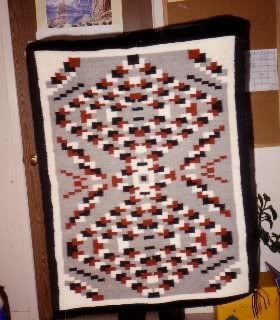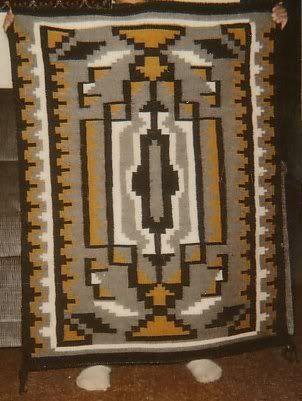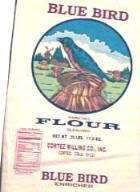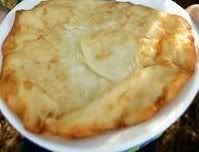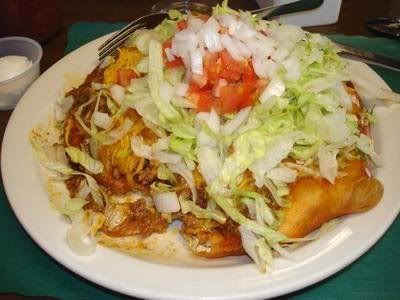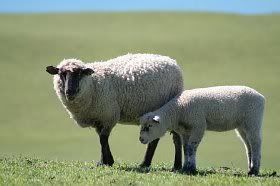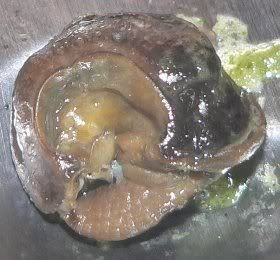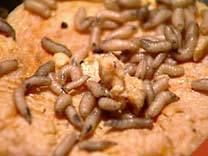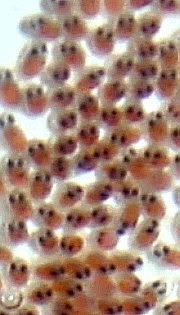The town itself, in the way of entertainment, revolves around the school sports teams. I remember before the new sports stadium was built there was only a small gym used from political campaigning to country dances. The gym, Chinle Community Center, was also the hotbed for the High School basketball games which are favorites during the fall season. Sold out games and long lines were nothing new to fans. There's just something about a small reservation school making it against all the big state teams at the state championships. People are known to drive to all the "away" games religiously and even if the Wildcats do not make it to states then people will go to root for any Navajo team playing :-)
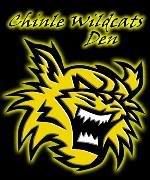
Back in the fifties there was no public school. The schools were operated under the guidelines of the United States Federal Government. "Manifest Destiny" had not been but a "pipe dream." The use of native language was not permitted and was swiftly punished with such tactics as the "soap in the mouth" routine. Like any underdog we prevailed and today the Navajo language is heard everywhere including the radio stations here on the reservation. Now there is an kindergarten, primary, elementary, and high school there. I also know they have college courses in the high school during the evening hours where Dine (Navajo) language is taught. The written language is a mixture of dipthongs, glottal stops, and other complex rules of syntax.
In other words it's difficult!
For any curious listeners here is a link to our Navajo Radio Station.There's streaming radio :-)
Many people who come to Chinle are in shock when they see how an "third world" living condition still exists. Yes we still have hogans and shacks but as a young developing Nation we are steadily seeing the benefits of better education and perseverance in young people today. I figure it has to do with the pride young people are taking in themselves and the backlash of the Boarding School days.
You try and deny anyone anything and they'll just find another way to get it.
Navajos have the will to survive and are getting the "know how" on a better way of doing it.
Hogans are octagonal shaped homes that are designed with a major harmony philosophy (iina). We build the home with the door facing east because the sun rises from the east. Now that the advent of modern shoe box homes has come a lot of people don't have eastern facing doors. It's something that has taken a new precedence in the last few years I've noticed. People specifically want their homes to mimic the old philosophy of eastern facing doors. Just take a look at the Navajo family (congratulations guys! You deserve it :-) that got their home built by Ty Pennington and the guys of Extreme Home Makeover- eastern facing doors. I don't live in an Hogan but have spent some nights in one. Of course I wanted to go back to our trailer because I missed the television, electricity, and running water. I can't help it. I get scared to go out to an outhouse after watching all the cliche scary movies!
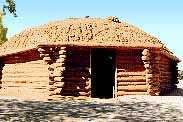
Horse drawn carriages were often used back in the fifties since just about everyone didn't have the means to buy a vehicle. The Nation, being so young and illiterate, had no way of integrating itself into the vast domain of politics, business, and legal matters. Poverty levels were unimaginable, written records had now just been getting organized, and mass communication was nil. The "smoke signals" were done by word of mouth and/or the little radios often found in Grammys' hogan. Telephones were mainly located in the bigger towns at trading posts and at shopping centers.
Technology is changing the very fabric of the Nation. However there is a certain amount of mistrust between the "keyboard" and some older folks like my Mom and Dad. The generation gap is prevalent in my home. My parents, an old-fashioned people, who I love dearly, who will gladly watch television but refuse to have anything to do with the internet. Old fashioned ideals are a good thing. Nothing wrong with them. It's my generation (some call it Generation X) that are given the responsibility to spearhead the vast amounts of information and use it to make us whole again.
Chinle also happens to be the birthplace of a type of rug popular among collectors. From what I read the different style of rug (no borders) and a new vegetable dye propelled the Navajo rugs into Americans homes. The rugs are a sign o' the times- from the type of material, the origin of the yarn, and the influence of popular culture. The rugs continue to be made with great success and skills are handed down mother to daughter. Grammy to Grand-Daughter. My mom has a loom in the back of the house which she used to weave rugs with. It's a beautiful thing that takes patience, discipline, and determination. I have seen some rugs that my mom made and they are quite beautiful. I'll dig up some old pictures of them and post them here for all to gaze upon. She's long since sold them and has a strong desire to do more.
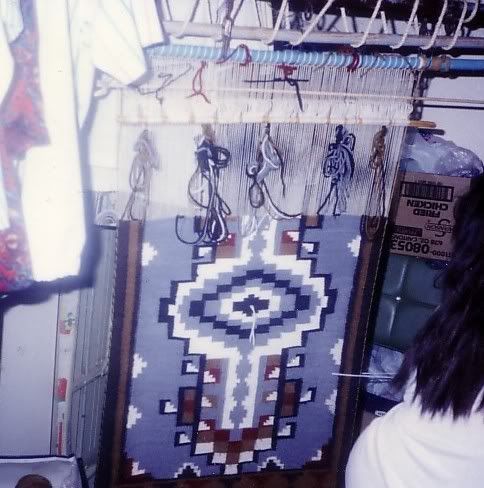
Three of Moms Rugs <<<333
© 2007 Tyrene Banks; including pictures of "moms rugs"; except all other pictures and links

